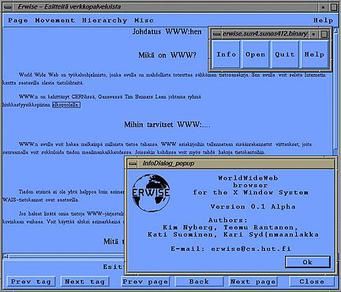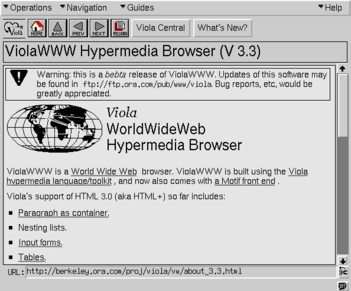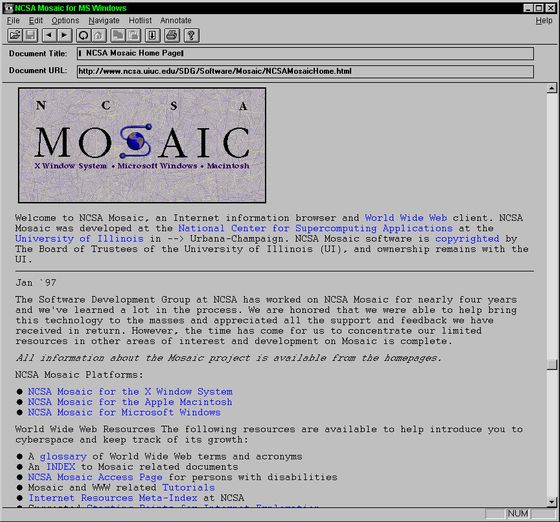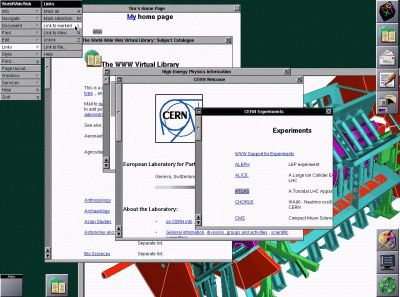Many web browsers that have disappeared in the early days of web browser

By
The history of web browsers used to browse websites, such as Chrome, Safari, Firefox, and Edge, began with the December 1990 WorldWide Web Browser . Although many browsers were born in the early days of the plant, many were consumed by the waves of the times, and now there are many things that do not come to mind even if they ask their names.
Web Browser History-First, Early
https://www.livinginternet.com/w/wi_browse.htm
Before Netscape: The forgotten Web browsers of the early 1990s | Ars Technica
https://arstechnica.com/information-technology/2019/05/before-netscape-forgotten-web-browsers-of-the-early-1990s/
The story begins with Tim Berners-Lee, who developed the ' World Wide Web ', where the Web pages are later connected by hyperlinks , was hired by the European Nuclear Research Organization (CERN) in June 1980.

by
The problem that CERN had at that time was that 'a lot of important information exists only in the staff's head, not being digitized / documented'. Berners-Lee continues to work on this problem using her own free time, half an year to improve CERN's control system for particle accelerators and four years in charge of technical design for Image Computer Systems. After that, I will return to CERN. Bernards-Lee launched the 'World Wide Web Project' in November 1990, and completed the world's first web browser, WorldWideWeb, in December. Then, in November 1992, various components of the WorldWide Web browser were rewritten in C language, and an API for Internet applications ' libwww ' was released, which includes many functions required for the Web browser, such as HTTP communication and HTML parsing and display. .
After libwww is released, various web browsers will be developed.
・ WorldWide Web browser
It is possible to display basic style sheets with 'World's First Web Browser' developed by Tim Berners-Lee. However, the supported OS was limited to NeXTSTEP . You can see what the WorldWide Web browser actually looks like in the following article.
CERN Launches World's First Web Browser 'WorldWideWeb' in a Browser-GIGAZINE

・ Line Mode Browser
The new browser developed by CERN's team led by Berners-Lee was '
・ Erwise
Erwise , developed by four Finnish university students in 1991, is the world's first web browser with a graphical user interface (GUI). It was equipped with word search inside the page and the function to open the linked page in a new window.

However, Finland at that time was in a serious recession, and it was difficult to launch Erwise because it was difficult to launch a venture company, and the final version was released in April 1992.
・ ViolaWWW

・ MidasWWW
MidasWWW is a web browser developed in the summer of 1992 by Tony Johnson of the SLAC National Accelerator Laboratory , who visited CERN and was impressed by Bernards-Lee. MidasWWW was able to display PostScript documents that could output chemical formulas directly to paper, so it seems that there was a surge in high-energy physicists who are ideal for physicists and who use the Internet.
・ Samba
It is the first Mac web browser developed by Nicola Perrot and Robert Kyrew , who launched the World Wide Web project with Bernards-Lee. Although it was completed around the end of 1992, it seems to have disappeared by the later appearing Mosaic.
・ Mosaic
A major success in the early days of web browser history, and one that could be said to have brought about a turning point in web browsers, is Mosaic, which appeared in February 1993. The Mosaic, developed by Mark Andriessen of NCSA (National Institute of Supercomputer Applications) , supports movies, music, bookmarks, history functions, etc., and was able to display images and documents in the same window. The <IMG> tag, which indicates where to place the image, was first used by Mosaic and is still used. And, one of Mosaic's most groundbreaking points was that it was 'very easy to install.' Another point was that it was a cross platform compatible with multiple operating systems such as Mac and UNIX.

By
・ Arena
Arena is the first in 1993 to incorporate technologies such as HTML 3.0, CSS, PNG, captions, image backgrounds, resizable tables, etc. that will be used later in Netscape, Internet Explorer, etc. Appeared as a web browser. The development was Dave Laget, who worked at Hewlett-Packard .
_screenshot_m.png)
・ Lynx
A browser developed by Lou Monturi et al. , A student at the University of Kansas, as a hypertext browser in 1992. In 1993, the ability to connect to the Internet was added, and it evolved into a web browser. It is a text-based browser that does not display images and can be operated easily with the keyboard. In addition, at the time of article creation, it is a working browser that is still repeatedly upgraded.
・ Cello
The first web browser for Windows, developed by Thomas R. Blues in 1993. It is a shareware, and although it was showing a steady sales trend of 500 downloads immediately after its release thanks to the increase of Windows users, it disappeared as it was sandwiched between Netscape and Internet Explorer.
・ IBox (Internet in a Box)
IBox is an Internet connection software package and an Internet connection software package that combines Mosaic, AirMosaic , Air Mail, Air News, and more. The browser was not new because it used the existing Mosaic, but it is noted that general users can easily access the World Wide Web, not just government and university users.
・ NaviPress
NaviPress, which appeared in February 1994, has been able to easily edit web pages online with a web browser integrated with an HTML editor after a long time since the WorldWide Web browser. NaviPress was sold until 2000, renaming AOLpress with the acquisition of America Online (AOL) . The update has stopped, but the final version of AOLpress 2.0 can be used on Windows 10 with compatibility mode.
As described above, various web browsers were developed during the early days of web browser development. But in 1994, Marc Developer, the developer of Mosaic, gave up on Mosaic via email from businessman James Clark and released the first version of the Netscape series, Netscape Navigator . Netscape was a great success, leading the browser war in the early 1990's, but in August 1995 it lost its share to Internet Explorer, which was standard installed on Windows 95 Microsoft Plus ! . The browser war seemed to have ended as Internet Explorer conquered the market, but in recent years Firefox, Google Chrome, etc. have appeared and are showing heights again.
Matthew Lazar of Ars Technica concludes the rise and fall of browsers in the early days of the Web browser era, 'Tim Berners-Lee's important thing in the project is cooperative, and above all open is important. In fact, if you follow the history of the web browser, you can see that various people have cooperated and sometimes inspired one another to develop the browser.
Related Posts:
in Software, Posted by darkhorse_log






